Chapt07
- 格式:pdf
- 大小:872.27 KB
- 文档页数:53
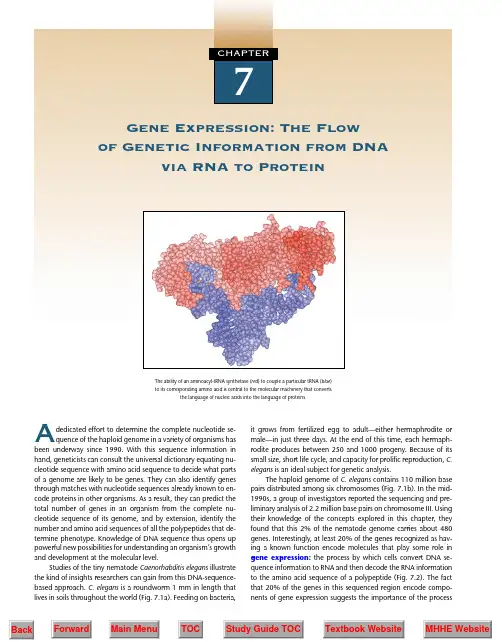
A dedicated effort to determine the complete nucleotide se-quence of the haploid genome in a variety of organisms has been underway since 1990. With this sequence information in hand, geneticists can consult the universal dictionary equating nu-cleotide sequence with amino acid sequence to decide what parts of a genome are likely to be genes. They can also identify genes through matches with nucleotide sequences already known to en-code proteins in other organisms. As a result, they can predict the total number of genes in an organism from the complete nu-cleotide sequence of its genome, and by extension, identify the number and amino acid sequences of all the polypeptides that de-termine phenotype. Knowledge of DNA sequence thus opens up powerful new possibilities for understanding an organism’s growth and development at the molecular level.Studies of the tiny nematode Caenorhabditis elegans illustrate the kind of insights researchers can gain from this DNA-sequence-based approach. C. elegans is a roundworm 1 mm in length that lives in soils throughout the world (Fig. 7.1a). Feeding on bacteria,it grows from fertilized egg to adult—either hermaphrodite or male—in just three days. At the end of this time, each hermaph-rodite produces between 250 and 1000 progeny. Because of its small size, short life cycle, and capacity for prolific reproduction, C. elegans is an ideal subject for genetic analysis.The haploid genome of C.elegans contains110million base pairs distributed among six chromosomes(Fig.7.1b).In the mid-1990s,a group of investigators reported the sequencing and pre-liminary analysis of2.2million base pairs on chromosome ing their knowledge of the concepts explored in this chapter,they found that this2%of the nematode genome carries about480 genes.Interestingly,at least20%of the genes recognized as hav-ing a known function encode molecules that play some role in gene expression: the process by which cells convert DNA se-quence information to RNA and then decode the RNA information to the amino acid sequence of a polypeptide(Fig.7.2).The fact that20%of the genes in this sequenced region encode compo-nents of gene expression suggests the importance of the processCHAPTER7Gene Expression: The Flowof Genetic Information from DNA via RNA to ProteinThe ability of an aminoacyl-tRNA synthetase (red) to couple a particular tRNA (blue)to its corresponding amino acid is central to the molecular machinery that convertsthe language of nucleic acids into the language of proteins.The Genetic Code: How Precise Groupings of the 4 Nucleotides Specify 20 Amino Acids223Figure 7.1 C. elegans:An ideal subject for genetic analysis.(a)Micrograph of several adult worms. (b)Six chromosomes form the haploid genome of C. elegans.The highlighted region depicts a 2.2million base pair portion of chromosome III that has been analyzed and found to encode about 480 genes.(a)T ranslationPolypeptideFigure 7.2Gene expression: The flow of geneticinformation from DNA via RNA to protein.Transcription and translation convert the information encoded in DNA into the order of amino acids in a polypeptide. In transcription, an enzyme known as RNA polymerase catalyzes production of an RNA transcript. In translation, the cellular machinery uses instructions in mRNA to synthesize a polypeptide, following the rules of the genetic code.to the life of the organism.If this ratio holds for the rest of the worm’s genome,about 3600of its estimated 18,000genes gener-ate the machinery that enables genes to be interpreted as proteins.In this chapter, we describe the cellular mechanisms that carry out gene expression. As intricate as some of the details may ap-pear, the general scheme of gene expression is elegant and straightforward: Within each cell, genetic information flows from DNA to RNA to protein.In 1957 Francis Crick proposed that genetic information flows in only one direction, and named his concept of a one-way molecular flow the “Central Dogma” of molecular biol-ogy. As Crick explained, “once ‘information’ has passed into pro-tein, it cannot get out again.”Inside most cells, as the Central Dogma suggests, genetic in-formation flows from one class of molecule to another in two dis-tinct stages (see Fig. 7.2). If you think of genes as instructions written in the language of nucleic acids, the cellular machinery first transcribes a set of instructions written in the DNA dialect to the same instructions written in the RNA dialect. The conversion ofDNA-encoded information to its RNA-encoded equivalent is known as transcription . The product of transcription is a tran-script : a molecule of messenger RNA (mRNA) in prokaryotes;a molecule of RNA that undergoes processing to become an mRNA in eukaryotes. In the second stage of gene expression, the cellular machinery translates the mRNA to its polypeptide equiva-lent in the language of amino acids. This decoding of nucleotide information to a sequence of amino acids is known as transla-tion . It takes place on molecular workbenches called ribosomes,which are composed of proteins and ribosomal RNAs (rRNAs); and it depends on the universal dictionary known as the genetic code , which defines each amino acid in terms of a specific se-quence of three nucleotides. It also depends on transfer RNAs (tRNAs), small RNA adaptor molecules that place specific amino acids at the correct position in a growing polypeptide chain. The tRNAs can bring amino acids to the right place on the translational machinery because tRNAs and mRNAs have complementary nu-cleotides that can base pair with each other.Four general themes emerge from our discussion of gene ex-pression. First, the pairing of complementary bases figures promi-nently in the precise transfer of information from DNA to RNA and from RNA to polypeptide. Second, the polarities of DNA, RNA, and protein molecules help guide the mechanisms of gene expression:the 3′-to-5′transcription of a template DNA strand yields a polar mRNA that grows from its 5′to its 3′end; the 5′-to-3′translation of this mRNA yields a polar protein running from amino terminal to carboxyl terminal. Third, like DNA replication and recombina-tion (discussed in Chapter 5), gene expression requires an input of energy and the participation of several specific proteins at differ-ent points in the process. Fourth, since the accurate one-way flow of genetic information determines protein structure, mutations224CHAPTER 7GENE EXPRESSION: THE FLOW OF GENETIC INFORMATION FROM DNA VIA RNA TO PROTEINthat change this information or obstruct its flow can have dramatic effects on phenotype.As we examine how cells use the sequence information con-tained in DNA to construct proteins, we presentI The genetic code: How triplets of the 4 nucleotidesunambiguously specify 20 amino acids, making it possibleto translate information from a nucleotide chain to asequence of amino acids.I Transcription: How RNA polymerase, guided by basepairing, synthesizes a single-stranded mRNA copy of agene’s DNA template.I Translation: How base pairing between mRNA and tRNAsdirects the assembly of a polypeptide on the ribosome.I A comprehensive example of gene expression in C. elegans.I How mutations affect gene information and expression.THE GENETIC CODE:HOW PRECISE GROUPINGS OF THE4NUCLEOTIDES SPECIFY20AMINO ACIDSA code is a system of symbols that equates information in one language with information in another. A useful analogy for the genetic code is the Morse code, which uses dots and dashes or short and long sounds to transmit messages over radio or tele-graph wires. Various groupings of the dot-dash/short-long symbols represent the 26 letters of the English alphabet. Be-cause there are many more letters than the two dot or dash symbols, groups of up to four dots, four dashes, and varying combinations of the two represent some letters. And because anywhere from one to four symbols specify each letter, the Morse code requires a symbol for “pause” to signify where one letter ends and the next begins.In the Genetic Code, a Triplet Codon Represents Each Amino AcidThe language of nucleic acids is written in four nucleotides—A,G,C,and T in the DNA dialect;A,G,C,and U in the RNA dialect—while the language of proteins is written in amino acids.To understand how the sequence of bases in DNA or RNA encodes the order of amino acids in a polypeptide chain,it is essential to know how many distinct amino acids there are.Watson and Crick produced the now accepted list of the20amino acids that are genetically encoded by DNA or RNA sequence over lunch one day at a local pub.They cre-ated the list by analyzing the amino acid sequence of a vari-ety of naturally occurring polypeptides.Amino acids that are present in only a small number of proteins or in only certain tissues or organisms did not qualify as standard building blocks;Crick and Watson correctly assumed that such amino acids arise when proteins undergo modification after their synthesis.By contrast,amino acids that are present in most, though not necessarily all,proteins made the list.The ques-tion then became:How can4nucleotides encode20amino acids?Just as the Morse code conveys information through dif-ferent groupings of dots and dashes, the 4 nucleotides encode 20 amino acids through specific groupings of A, G, C, and T or A, G, C, and U. Researchers initially arrived at the number of letters per grouping by deductive reasoning, and later con-firmed it by experiment. They reasoned that if only one nu-cleotide represented an amino acid, there would be informa-tion for only four amino acids: A would encode one aminoacid; G, a second amino acid; C, a third; and T, a fourth. If twonucleotides represented each amino acid, there would be 42ϭ16 possible combinations of couplets.Of course, if the code consisted of groups containing oneor two nucleotides, it would have 4 ϩ16 ϭ20 groups and could account for all the amino acids, but there would be noth-ing left over for the pause denoting where one group ends and the next begins. Groups of three nucleotides in a row would provide 43ϭ64 different triplet combinations, more than enough to code for all the amino acids. If the code consisted of doublets and triplets, a signal denoting pause would once again be necessary. But a triplets-only code would require no symbol for “pause” if the mechanism for counting to three and distinguishing among successive triplets were very reliable.Although this kind of reasoning—explaining the un-known in terms of the known by looking for the simplest pos-sibility—generates a theory, it does not prove it. As it turnedout, however, the experiments described later did indeeddemonstrate that groups of three nucleotides represent all 20amino acids. Each nucleotide triplet is called a codon.Eachcodon, designated by the bases defining its three nucleotides,specifies one amino acid. For example, GAA is a codon forglutamic acid (Glu), and GUU is a codon for valine (Val). Be-cause the code comes into play only during the translation partof gene expression, that is, during the decoding of messengerRNA to polypeptide, geneticists usually present the code in theRNA dialect of A, G, C, and U, as depicted in Fig. 7.3. How-ever, when speaking of genes, they can substitute T for U toshow the same code in the DNA dialect.If you knew the sequence of nucleotides in a gene or itstranscript as well as the sequence of amino acids in the corre-sponding polypeptide, you could deduce the genetic codewithout understanding how the cellular machinery uses thecode to translate from nucleotides to amino acids. Althoughtechniques for determining both nucleotide and amino-acidsequence are available today, this was not true when re-searchers cracked the genetic code in the 1950s and 1960s. Atthat time, they could establish a polypeptide’s amino-acid se-quence, but not the nucleotide sequence of DNA or RNA. Be-cause of their inability to read nucleotide sequence, they usedAThe Genetic Code: How Precise Groupings of the 4 Nucleotides Specify 20 Amino Acids225Figure 7.3The genetic code: 61 codons represent the 20 amino acids, while 3 codons signify stop.To read the code, find the first letter in the left column, the second letter along the top, and the third letter in the right column; this reading corresponds to the 5′-to-3′direction along the mRNA. Although most amino acids are encoded by two or more codons, the genetic code is unambiguous because each codon specifies only one amino acid.an assortment of genetic and biochemical techniques to fathom the code. They began by examining how different mu-tations in a single gene affected the amino-acid sequence of the gene’s polypeptide product, using the abnormal (specific mutations) to understand the normal (the general relationship between genes and polypeptides).Mapping Studies Confirmed That a Gene’s Nucleotide Sequence Is Colinear with a Polypeptide’s Amino-Acid SequenceWe have seen that DNA is a linear molecule with base pairs following one another down the intertwined chains. Proteins, by contrast, have complicated three-dimensional structures. Even so, if unfolded and stretched out from amino terminus to carboxyl terminus, proteins have a one-dimensional, linear structure—a specific sequence of amino acids. If the informa-tion in a gene and its corresponding protein are colinear, the consecutive order of bases in the DNA from the beginning to the end of the gene would stipulate the consecutive order of amino acids from one end to the other of the outstretched pro-tein. Note that this hypothesized relationship implies that both a gene and its protein product have definite polarities with an invariant relation to each other.Charles Yanofsky, in studying the Escherichia coli gene for a subunit of the enzyme tryptophan synthetase, was the first to compare maps of mutations within a gene to the par-ticular amino-acid substitutions that resulted. He began by generating a large number of trpϪauxotrophic mutants that carried mutations in the trpA gene for the tryptophan syn-thetase subunit. He next made a fine structure recombinational map of these mutations; and then he purified and determined the amino acid sequence of the mutant tryptophan synthetase subunits. As Fig. 7.4a illustrates, Yanofsky’s data showed that the order of mutations mapped within the DNA of the gene by recombination was colinear with the positions of the amino-acid substitutions occurring in the resulting mutant proteins. Genetic Analysis Revealed That Nonoverlapping Codons Are Set in a Reading FrameBy carefully examining the results of his analysis,Yanofsky, in addition to confirming the existence of colinearity,de-duced key features of codons and helped establish many pa-rameters of the genetic code relating nucleotides to amino acids.A Codon Is Composed of More Than One Nucleotide Yanofsky observed that different point mutations(changes in only one nucleotide pair)may affect the same amino acid.In one example shown in Fig.7.4a,mutation#23changed the glycine(Gly)at position211of the wildtype polypeptide chain to arginine(Arg),while mutation#46yielded glutamic acid(Glu) at the same position.In another example,mutation #78changed the glycine at position234to cysteine(Cys), while mutation#58produced aspartic acid(Asp)at the same position.In both cases,Yanofsky also found that recombina-tion could occasionally occur between two mutations that changed the identity of the same amino acid,and such re-combination would produce a wildtype tryptophan syn-thetase gene(Fig.7.4b).Because the smallest unit of recombination is the base pair,two mutations capable of re-combination—in this case,in the same codon because they affect the same amino acid—must be in different(although nearby)nucleotides.Thus,a codon contains more than one nucleotide.Each Nucleotide Is Part of Only a Single CodonAs Fig. 7.4a illustrates, each of the point mutations in the tryp-tophan synthetase gene characterized by Yanofsky alters the identity of only a single amino acid. This is also true of the point mutations examined in many other genes, such as the hu-man genes for rhodopsin and hemoglobin (see Chapter 6). Since point mutations change only a single nucleotide pair and most point mutations affect only a single amino acid in a polypeptide, each nucleotide in a gene must influence the identity of only a single amino acid. If, on the contrary, a nu-cleotide were part of more than one codon, a mutation in that nucleotide would affect more than one amino acid.226CHAPTER 7GENE EXPRESSION: THE FLOW OF GENETIC INFORMATION FROM DNA VIA RNA TO PROTEIN1 m.u.N C2114926822151234Figure 7.4Experiments analyzing the E. coli gene for a subunit of tryptophan synthetase confirm colinearity and reveal significant features of the genetic code.(a)A genetic map of the trpA gene of E. coli,identifying the amino-acid substitutions that characterize several of Yanofsky’s mutant strains. The positions of the mutations and amino-acid substitutions are colinear. These mutations change only a single amino acid, suggesting that each nucleotide is part of only a single codon. (b)Confirmation that codons must include two or more base pairs came from crosses between two strains that carried an altered amino acid at the same position. Since wildtype progeny occasionally appeared, each strain had a point mutation at a slightly different site. Crossing-over between the mutant sites could produce a wildtype allele.A Codon Is Composed of Three Nucleotides,and the Designated Starting Point for Each Gene Establishes the Reading Frame for These Triplets Although the most efficient code that would allow 4 nu-cleotides to specify 20 amino acids requires 3 nucleotides per codon, more complicated scenarios are possible. Francis Crick and Sydney Brenner obtained convincing evidence for the triplet nature of the genetic code in studies of mutations in the bacteriophage T4 rIIB gene (Fig. 7.5). They induced the mu-tations with proflavin, an intercalating mutagen that can insert itself between the paired bases stacked in the center of the DNA molecule (Fig. 7.5a). Their assumption was that proflavin would act like other mutagens, causing single-base substitutions. If this were true, it would be possible to gener-ate revertants through treatment with any mutagen. Surpris-ingly, genes with proflavin-induced mutations did not revert to wildtype upon treatment with other mutagens known to cause nucleotide substitutions. Only further exposure to proflavin caused proflavin-induced mutations to revert to wildtype (Fig.7.5b). Crick and Brenner had to explain this observation be-fore they could proceed with their phage experiments. With keen insight, they correctly guessed that proflavin does not cause base substitutions; instead, it causes insertions or dele-tions. This hypothesis explained why base-substituting muta-gens could not revert proflavin-induced mutations; it was also consistent with the structure of proflavin. By intercalating be-tween base pairs, proflavin would distort the double helix and thus interfere with the action of enzymes that function in the repair, replication, or recombination of DNA, eventually caus-ing the deletion or addition of one or more nucleotide pairs to the DNA molecule.Crick and Brenner began their experiments with a partic-ular proflavin-induced rIIBϪmutation. They next treated this mutant strain with more proflavin to isolate an rIIBϩrevertant (see Fig. 7.5b), and showed that the revertant’s chromosome actually contained two different rIIBϪmutations: One was the original mutation (FC0 in the figure); the other was newly in-duced (FC7). Either mutation by itself yields a mutant pheno-type, but their simultaneous occurrence in the same gene yielded an rIIBϩphenotype. Crick and Brenner reasoned that if the first mutation was the deletion of a single base pair, rep-resented by the symbol (Ϫ), then the counteracting mutation must be the insertion of a base pair, represented as (ϩ). The restoration of gene function by one mutation canceling an-other in the same gene is known as intragenic suppression. On the basis of this reasoning, they went on to establish T4 strains with different numbers of (ϩ) and (Ϫ) mutations in the same chromosome. Figure 7.5c tabulates the phenotypes asso-ciated with each combination of proflavin-induced mutations.I n analyzing the data, Crick and Brenner assumed that each codon is a trio of nucleotides, and for each gene there is a single starting point. This starting point establishes a read-Three single base insertions ( + + + )Single base insertion (+)Single base deletion (–)ATG AAC AA GCG C G G G GAA GCG GACATG AAC AA T GCG C C G G A G GAA GCG GAC ATG AAC AAT GCG CCG GAG GAA GCG GAC ATG AAC AAT G G CGC T CGG C AG GAA GCG GACATG AAC AAT GCG CCG GAG GAA GCG GAC ATG AAC AAT G G CGCCG GAG GAA GCG GACATG AAC AA T GCG CCG GAG GAA GCG GAC ATG AAC AA GCG CCG GAG GAA GCG GACG GT CFigure 7.5Studies of frameshift mutations in thebacteriophage T4 rIIB gene show that codons consist of (e)228CHAPTER 7GENE EXPRESSION: THE FLOW OF GENETIC INFORMATION FROM DNA VIA RNA TO PROTEINing frame: the partitioning of groups of three nucleotides such that the sequential interpretation of each succeeding tripletgenerates the correct order of amino acids in the resultingpolypeptide chain. If codons are read in order from a fixedstarting point, one mutation will counteract another if the twoare equivalent mutations of opposite signs; in such a case, eachinsertion compensates for each deletion, and this counterbal-ancing restores the reading frame. The gene would only regainits wildtype activity, however, if the portion of the polypeptideencoded between the two mutations of opposite sign is not re-quired for protein function, because in the double mutant, thisregion would have an improper amino-acid sequence. Simi-larly, if a gene sustains three or multiples of three changes ofthe same sign, the encoded polypeptide can still function, be-cause the mutations do not alter the reading frame for the ma-jority of amino acids (Fig. 7.5d). The resulting polypeptidewill, however, have one extra or one fewer amino acid thannormal (designated by three plus signs or three minus signs,respectively), and the region encoded by the part of the genebetween the first and the last mutations will not contain thecorrect amino acids.By contrast, a single nucleotide inserted into or deletedfrom a gene alters the reading frame and thereby affects theidentity of not only one amino acid, but of all other aminoacids beyond the point of alteration (Fig. 7.5e). Changes thatalter the grouping of nucleotides into codons are calledframe shift mutations: they shift the reading frame for all codons beyond the point of insertion or deletion, almost al-ways abolishing the function of the polypeptide product.A review of the evidence tabulated in Fig. 7.5c supportsall these points. A single (Ϫ) or a single (ϩ) mutation de-stroyed the function of the rIIB gene and produced an rIIBϪphage. Similarly, any gene with two base changes of the samesign (ϪϪor ϩϩ), or with four or five insertions or deletionsof the same sign (for example, ϩϩϩϩ) also generated a mu-tant phenotype. However, genes containing three or multiplesof three mutations of the same sign (for example, ϩϩϩor ϪϪϪϪϪϪ) as well as genes containing a (ϩϪ) pair of mutations generated rIIBϩwildtype individuals. In these lastexamples, intragenic suppression allowed restitution of thereading frame and thereby restored the lost or aberrant geneticfunction produced by other frameshift mutations in the gene. Most Amino Acids are Specified by More Than One Codon As Fig.7.5illustrates,intragenic suppression occurs only if in the region between two frameshift mutations of opposite sign, a gene still dictates the appearance of amino acids,even if these amino acids are not the same as those appearing in the normal protein.If the frameshifted part of the gene encodes instructions to stop protein synthesis,for example,by introducing a triplet of nucleotides that does not correspond to any amino acid,then wildtype polypeptide production would not continue.This is because polypeptide synthesis would stop before the compen-sating mutation could reestablish the correct reading frame.The fact that intragenic suppression occurs as often as itdoes suggests that the code includes more than one codon for some amino acids. Recall that there are 20 common amino acids but 43ϭ64 different combinations of three nucleotides. If each amino acid corresponded to only a single codon, there would be 64 Ϫ20 ϭ44 possible triplets not encoding an amino acid. These noncoding triplets would act as “stop” sig-nals and prevent further polypeptide synthesis. I f this hap-pened, more than half of all frameshift mutations (44/64) would cause protein synthesis to stop at the first codon after the mutation, and the chances of extending the protein each amino acid farther down the chain would diminish exponen-tially. As a result, intragenic suppression would rarely occur. However, we have seen that many frameshift mutations of one sign can be offset by mutations of the other sign. The distances between these mutations, estimated by recombination fre-quencies, are in some cases large enough to code for more than 50 amino acids, which would be possible only if most of the 64 possible triplet codons specified amino acids. Thus, the data of Crick and Brenner provide strong support for the idea that the genetic code is degenerate:Two or more nucleotide triplets specify most of the 20 amino acids (see Fig. 7.3). Cracking the Code: Biochemical Manipulations Revealed Which Codons Represent Which Amino AcidsAlthough the genetic experiments just described enabled re-markably prescient insights about the nature of the genetic code,they did not make it possible to assign particular codons to their corresponding amino acids.This awaited the discovery of messenger RNA and the development of techniques for syn-thesizing simple messenger RNA molecules that researchers could use to manufacture simple proteins in the test tube. The Discovery of Messenger RNAs, Moleculesfor Transporting Genetic InformationIn the1950s researchers exposed eukaryotic cells to amino acids tagged with radioactivity and observed that protein syn-thesis incorporating the radioactive amino acids into polypep-tides takes place in the cytoplasm,even though the genes for those polypeptides are sequestered in the cell nucleus.From this discovery,they deduced the existence of an intermediate molecule,made in the nucleus and capable of transporting DNA sequence information to the cytoplasm where it can di-rect protein synthesis.RNA was a prime candidate for this in-termediary information-carrying molecule.Because of RNA’s potential for base pairing with a strand of DNA,one could imagine the cellular machinery copying a strand of DNA into a complementary strand of RNA in a manner analogous to the DNA-to-DNA copying of DNA replication.Subsequent stud-ies in eukaryotes on the incorporation of radioactive uracil(a base found only in RNA)into molecules of RNA showed that although the molecules are synthesized in the nucleus,at least some of them migrate to the cytoplasm.Among those RNA molecules that migrate to the cytoplasm are the messenger RNAs,or mRNAs,depicted in Fig.7.2.They arise in the nu-cleus from the transcription of DNA sequence information through base pairing and then move,after processing,to the。
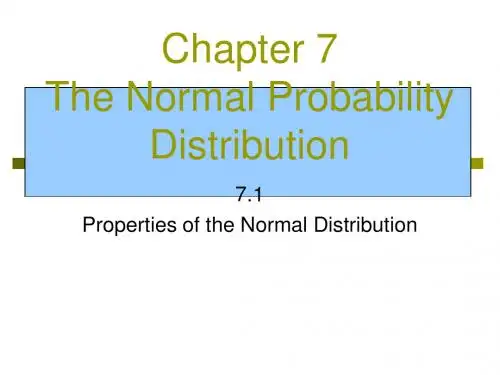
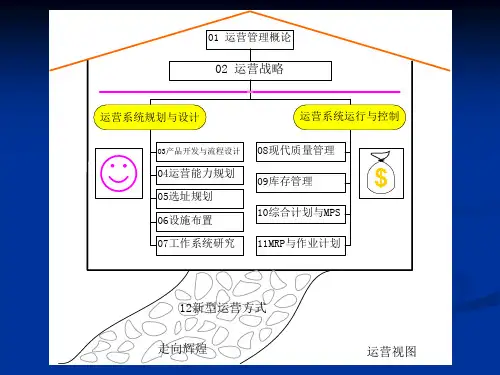
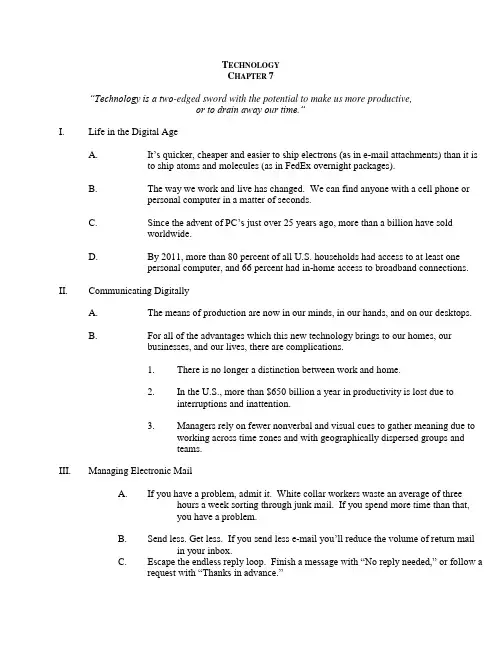
T ECHNOLOGYC HAPTER 7“Technology is a two-edged sword with the potential to make us more productive,or to drain away our time.”I. Life in the Digital AgeA. It’s quicker, cheaper and easier to ship electrons (as in e-mail attachments) than it isto ship atoms and molecules (as in FedEx overnight packages).B. The way we work and live has changed. We can find anyone with a cell phone orpersonal computer in a matter of seconds.C. Since the advent of PC’s just over 25 years ag o, more than a billion have soldworldwide.D. By 2011, more than 80 percent of all U.S. households had access to at least onepersonal computer, and 66 percent had in-home access to broadband connections.II. Communicating DigitallyA. The means of production are now in our minds, in our hands, and on our desktops.B. For all of the advantages which this new technology brings to our homes, ourbusinesses, and our lives, there are complications.1. There is no longer a distinction between work and home.2. In the U.S., more than $650 billion a year in productivity is lost due tointerruptions and inattention.3. Managers rely on fewer nonverbal and visual cues to gather meaning due toworking across time zones and with geographically dispersed groups andteams.III. Managing Electronic MailA. If you have a problem, admit it. White collar workers waste an average of threehours a week sorting through junk mail. If you spend more time than that,you have a problem.B. Send less. Get less. If you send less e-mail you’ll reduce the volume of return mailin your inbox.C. Escape the endless reply loop. Finish a message with “No reply needed,” or follow arequest with “Thanks in advance.”D. Check the “To” field before you click “Send.”E. Don’t copy the world. Think twice about the people you put on your “cc” list.F. Pick a subject, (almost) any subject. Crafting a relevant subject line will promptpeople to open your messages and act on them quickly.G. Think before replying. If you respond to e-mail messages immediately, youestablish the expectation in your readers’ minds that you will always respond quickly.H. Think again before replying. If you’re angry, upset, or irritated at something you’vejust read in an e-mail message, give yourself a day – or at least a few hours – to cooldown before responding. You may end up saying something you’ll regret.I. Be careful with criticism. E-mail eliminates virtually all of the important nonverbalcues we’re accustomed to seeing and hearing as we judge a message sender’s intent.J. Handle each message just once. If it’s unimportant or irrelevant, hit the delete key.File each message you want to keep in a folder as it comes in.K. Don’t check your e-mail constantly.L. Don’t ignore the conventions of c orrespondence. You should not write to people in all lower case letters, ignore punctuation, or abandon conventional spelling.M. Avoid abbreviations and cyberjargon. You can’t assume everyone is familiar with the endless acronyms circulating out there.N. Try to keep messages under two or three paragraphs.O. Make URLs Useful.P. Be cautious about attachments. Don’t attach documents, pictures, or spreadsheets to your messages unless you’re certain the recipient wants or needs to see them.Q. Include a signature file.R. Check your time/date stamp.S. Get help when you need it.IV. Privacy and Workplace MonitoringA. Why Do Employers Monitor?1. Security. Every business has information that it wants kept confidential.2. Productivity. More than one-third of all lost productivity is attributed toInternet abuse at work.3. Protection. Many companies faced with costly lawsuits are monitoring e-mail,voice mail, and other communication systems to uncover and disciplineworkers who harass or intimidate others in the workplace.4. Industry Regulation. State and federal regulatory agencies have publishednumerous rules requiring businesses of many sorts to hang onto all of their e-mail, just as they would retain their paper-based correspondence.B. Does an Employee Have a Right to Privacy?1. No federal law covers all aspects of an employee’s right to privacy on the job.Instead, a patchwork of federal and state laws regulates everything fromelectronic monitoring to visual surveillance, drug testing and locker searches.2. Employees really do not have a right of privacy in e-mailcommunication on their employer’s system, unless theemployer acts in a manner giving rise to a reasonableexpectation of privacy.3. The Electronic Communication Privacy Act of 1986, asamended, protects e-mail messages from interception by anddisclosure to third parties.C. Employer Rights. An employer has the right:1. To intercept and review e-mail messages generated,transmitted, stored, or received on a company-owned or leasedsystem;2. To conduct an e-mail audit to determine how the system isbeing used, when, and under what conditions, for whatpurposes, and by whom;3. To disclose certain e-mail content to third parties if anappropriate authority (postmaster or system administrator)suspects or discovers illegal or unauthorized use;4. To require employee training in e-mail system use;5. To receive employee acknowledgment of training andunderstanding of e-mail system policy guidelines, restrictions,and limitations.D. Employer Expectations. An employer may reasonably expect:1. That company-owned e-mail systems will be used principallyor exclusively for official business purposes;2. That employees will not use company-owned e-mail systemsfor profit, private gain, or personally owned businesses;3. That employees will not use company-owned systems forillegal purposes;4. That employees will not use company-owned systems forunauthorized disclosure of proprietary data or confidentialinformation;5. That employees will not use company-owned systems to sendinappropriate messages, including rude or discourteousmessages, sexually harassing messages, sexist or racistlanguage, profane language, obscene language or graphicimages or correspond with unauthorized addresses.E. Can my Employer Listen to My Phone Calls at Work?1. Employers may monitor calls with clients or customers for training purposesto assure quality control.1. Federal law, which regulates phone calls with people outside the state doesnot allow unannounced monitoring for business-related calls.2. Under Federal law, when an employer realizes a call is personal, he or shemust immediately stop monitoring the call.F. Can my Employer Obtain a Record of My Phone Calls?1. Telephone numbers dialed from phone extensions can be recorded by penregisters. It allows an employer to see a list of phone numbers dialed by yourextension and the length of each call.2. A new programming concept called “presence awareness” is able todetermine whether a PC, cell phone or wireless device is turned on or in use.G. Can my Employer Watch my Computer Terminal While I Work?1. Since your employer owns the computer network andterminals, he or she is free to use them to monitor employees.2. Union contr acts may limit an employer’s right to monitor.H. What Sort of Things Can They Monitor?1. Very inexpensive software and easy-to-operate hardwaremake it possiblefor almost any employer to know who has company-providedInternet access, who’s online, what they’re watching, howoften, and for how long.2. New software will now permit an employer to follow what’shappening on each employee’s computer screen.I. How Can I Tell If I am Being Monitored?1. Most computer monitoring equipment allows employees tomonitor without an employee’s knowledge.2. Some employers notify their workers that monitoring takesplace. If you know they’re watching, you’re more likely tobehave yourself.J. Is My Voice Mail Private?1. Voice Mail and e-mail are regarded as being nearly the samein the eyes of the law.2. The telephones, switching equipment, and the computer harddrives on which the voice mail is stored are the property of thecompany, and the company can access, store, and listen toanyone’s voice mail.K. Is There Any Way I Can Keep My E-mail and other Work Private?1. Yes, but an employer may forbid it.2. You could encrypt a personal e-mail message before you send it.L. Can Instant Messages be Monitored?1. An employer can monitor just about anything including AOL InstantMessenger.2. Many corporations have brought instant messaging into theoffice to make small groups and teams more effective.V. The Internet and Online BehaviorA. A survey of college students across the country found that 94 percent use the Internet,compared with just 66 percent of the overall U.S. population.B. Other findings about college students’ online use revealed the following.1. To them, the Internet and e-mail are as commonplace as telephones andtelevisions, and equally as indispensable.2. Two-thirds of them say they think the Internet has improved theirrelationships with classmates, and more than half think e-mail has enhancedtheir relationships with professors.3. These habits are clearly likely to continue once students enter the workforce.C. The Internet has become central to the way college students conduct research fortheir courses; communicate with their professors, friends, and family, and gatherinformation about everything from sports to the stock market and the weather.VI. Text MessagingA. Behind the texting explosion is a fundamental shift in how we view our mobile devices.1. Average “talk minutes” are down, but text messaging is up for both teenagers andadults.2. Text messaging takes up less bandwidth than phone calls, and costs less.3. Part of what’s driving the texting surge is the popularity of social media sites likeTwitter or Facebook.4.The goal is to pass along information in as little time, with as little small talk aspossible. Textin g’s rise over conversation is changing the way we interact.VII. Social MediaA. Social media is a term widely used to include many Internet-based functions and severalimportant categories are worth noting.1. Social bookmarking are sites that interact by tagging Web sites and searching onesbookmarked by other people.2. Social news sites interact by voting for articles (most popular, most read, most e-mailing)and commenting on them.3. Social networking sites like Facebook and MySpace interact by adding friends,commenting on profiles, joint groups and holding discussions.4.Social photo and video sharing sites like YouTube and Flickr interact by sharing photos orvideos.5.Wikis, such as Wikipedia and Wikia interact by adding articles and allowing users to editexisting articles online.B. Businesses are beginning to figure out how to use social media, primarily for marketingpurposes, but also for reputation management and corporate communication.C. On your own time, social media can be helpful for boosting your career and connecting withfriends.1. Just be careful how much you log on at work.2. It’s best to log on from a private computer or smart phone and to do it during break times.3. Keep in mind that there is still a risk. Don’t trash your boss or co workers or complain tooseverely about work.VIII. Etiquette and Office ElectronicsA. Cell phones1. Turn them off while driving.2. Turn them off while in any location where people expect some measure ofprivacy and quiet.3. Don’t assume those around you are interested in hearing your conversation.4. Don’t assume that because your employees own a cell phone that they areavailable to talk business 24 hours a day, 7 days a week.B. Voice Mail1. Keep your outgoing message brief.2. One outgoing message is fine unless you plan to be gone for a week.3. Tell people how to get past the outgoing message.4. When leaving a voice mail message, identify yourself, give your call back number,and explain briefly why you’re calling.5. Don’t listen to your voice ma il messages on the speaker phone.C. E-Mail1. Don’t send e-mails that make angry demands.2. Don’t waste recipients time with the latest “jokes du jour.”3. Don’t order people to visit your web page.4. Don’t write to anyone in all lower case letters or s hout at your readers in all capital letters.5. Don’t ever insult, malign, harass or demean your readers or anyone else in those e-mailmessages you write.6.Include a salutation, complimentary close and – in the first paragraph or two – a statementof purpose.VII. Working VirtuallyA. Advantages1. Cost – paying less for office space and employee support;2. Productivity – reduced absenteeism and increased employee retention;3. Access – to its own employees at unusual times and places;B. Disadvantages1. Costs – initial outlay to purchase equipment can be significant;1. Technology – concerns about providing technical support to remote workers;2. Culture – telecommuters may not be given the same opportunities fortraining, advancement, or promotion;3. People – many take pride in their office, enjoy socializing andinteracting with their co-workers and colleagues and find the climatein their work locations energizing and inspiring;VIII. TeleconferencingA. Planning a Teleconference1. Identify the purpose of your teleconferencing meeting.2. Identify the person who will chair the meeting.3. Plan the agenda.4. Distribute the agenda.5. Schedule the teleconference.6. Confirm the teleconference with the participants.7. Share important resource materials with participants.B. Conducting a Teleconference1. Get to the conference site early.2. Watch what you wear.3. Act as if people are watching you.4. Start on time.5. Take control of the conference.6. Ask participants to introduce themselves as you begin.7. Jot down peop le’s names and locations.8. Ask participants to identify themselves when they speak for the first time.9. Speak a bit more slowly to ensure that everyone can understand you.10. Avoid side conversations.11. Be patient if the system includes a slight delay.12. Try to make eye contact with the camera.13. Don’t read a speech or prepared statement.14. Summarize key issues as you move along.15. Establish what’s next for the group.16. Stop on time.17. Prepare and distribute minutes of the teleconference.。
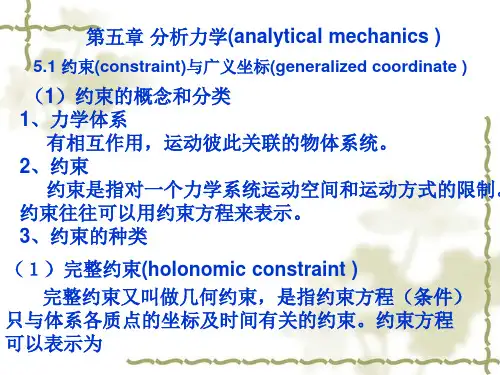
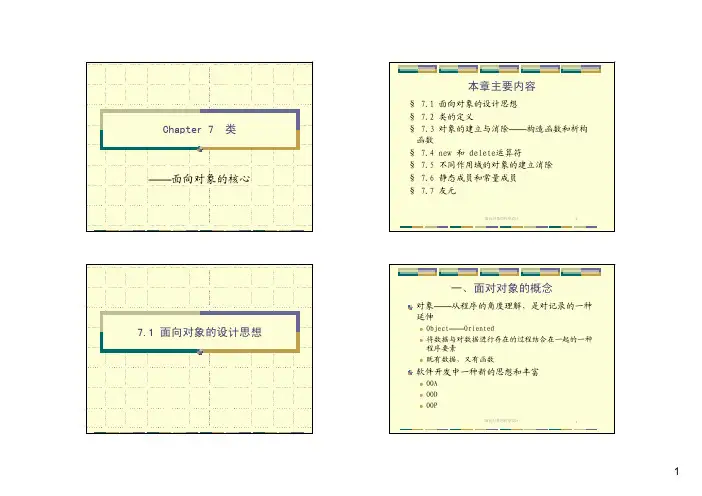
本章主要内容§ 7.1 § 7.2 § 7.3 函数 § 7.4 § 7.5 § 7.6 § 7.7 面向对象的设计思想 类的定义 对象的建立与消除——构造函数和析构 new 和 delete运算符 不同作用域的对象的建立消除 静态成员和常量成员 友元面向对象的程序设计Chapter 7类——面向对象的核心 面向对象的核心2一、面对对象的概念对象——从程序的角度理解,是对记录的一种 延伸7.1 面向对象的设计思想Object——Oriented 将数据与对数据进行存在的过程结合在一起的一种 程序要素 既有数据,又有函数软件开发中一种新的思想和丰富OOA OOD OOP面向对象的程序设计41二、OOP的思想将代码和数据放到一个程序要素中,统一进行 设计和管理 由以函数为中心的设计=》以对象为中心的设 计 对象是第一位的,函数是属于对象的 通过对象来调用函数,而不是过去将数据作为 函数的参数 优点:逻辑清晰,避免过多分支,减少函数数 量面向对象的程序设计5三、对象体系的组成类与对象类是一个模版,说明了一个对象类的组成方式 对象是类的一个实例变量,在内存中占据一定的空 间 C++:类=类的定义,对象=类的变量成员变量(Member)和实例变量(Instance)类数据成员 每个对象中都有一个和类的成员具有相同名称和类 型的变量——实例变量 方法——类的函数成员(Member Function)面向对象的程序设计6四、OO的特征封装性(Encapsulation)特点数据和方法的结合 数据具有隐蔽性(成员的类型),公共、私有、保护成员继承性(Inheritance)从已有的类中通过增加新的成员的办法,产生的新 的类 继承的方法:重复使用,增加,修改 基类(base class)和派生类(derived class) 单一继承和多重继承 形成一个类族目的保护对象的数据,避免过分暴露; 数据使用更方便; 对使用者隐藏实现的细节,使设计、实现和使用分开前提是对类的抽象(abstract)对对象的特征、行为的分析与概括 考虑:封装和继承 对类的整体思考面向对象的程序设计7面向对象的程序设计82多态性(Polymorphsim)同一个类族中不同的类,具有相同的方法,但是无 论在功能还是实现上都上不同的 调用哪一个方法是由对象所决定的。
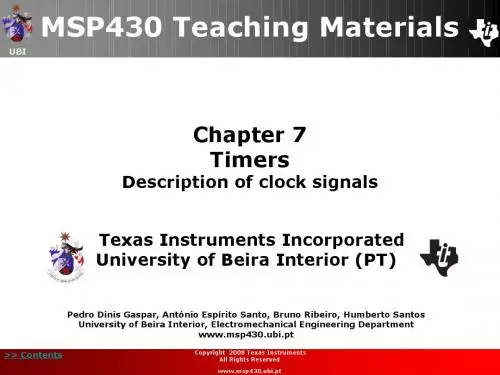

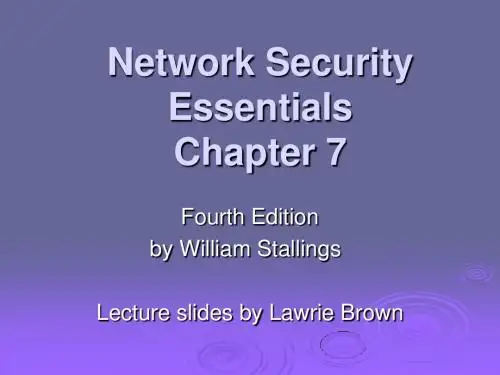
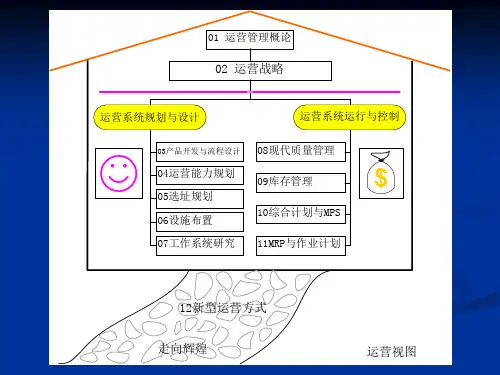
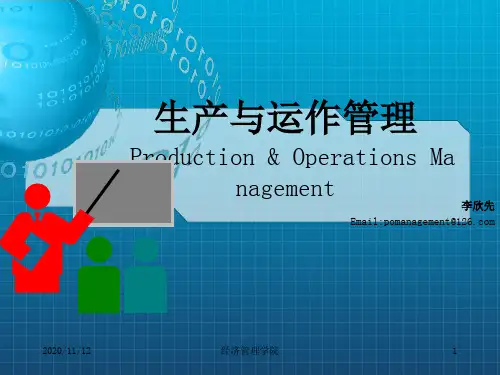
第七章典型接口芯片原理和应用 (1)7.1简单I/O接口电路及其应用 (2)7.1.1接口电路的构成 (2)7.1.2简单输入接口电路 (2)7.1.3简单输出接口电路 (4)7.1.4简单双向接口电路 (5)7.1.5应用举例 (6)7.2可编程计数器/定时器8253及其应用 (8)7.2.1可编程接口芯片概述 (8)7.2.28253的功能及结构 (9)7.2.38253的工作方式 (11)7.2.48253的控制字及初始化编程 (18)7.2.5应用实例 (18)7.3可编程外围接口芯片8255A及其应用 (22)7.3.18255A的功能及结构 (22)7.3.28255A的工作方式 (24)7.3.38255A的控制字和状态字 (28)7.3.4应用实例 (30)7.4串口通信和可编程接口芯片8251A及其应用 (35)7.4.1串行通信的基本概念 (35)7.4.28251A的内部结构和外部引脚 (42)7.4.38251A的编程命令 (46)7.4.48251A的初始化编程 (47)7.4.58251A的应用实例 (48)7.5习题 (51)7.6参考文献 (53)第七章 典型接口芯片原理和应用接口是CPU与外部设备之间进行信息交换的必经通道。
为了实现接口的功能,要求接口电路应能完成信息缓冲、信息转换、电平转换、数据存取和传送、联络控制等工作,这些工作分别由接口电路的两大部分即与计算机连接的总线接口和与外部设备连接的外设接口来实现。
总线接口一般包括内部寄存器、存取逻辑和传送控制逻辑电路等,主要负责数据缓冲、传输管理等工作;而外设接口则负责与外部设备通信时的联络和控制以及电子和信息转换等。
本章主要讨论外设接口电路,以下如无特殊说明,所讨论的接口电路均指外设接口。
接口电路从总的功能上可以分为输入接口和输出接口,分别完成信息的输入和输出。
从传送方式上,又可分为并行接口和串行接口。
另外,从所传送信息的类型上,还可分为数字量的输入/输出(I/O)接口及模拟量的输入/输出接口。
近年来,随着超大规模集成电路技术的发展,I/O接口电路的集成度和智能化程度越来越高,单个接口集成电路芯片的集成度通常超过几万个元器件/片。
集成度的提高使得在接口芯片内直接集成I/O专用微处理器成为可能,这就是所谓的智能化的I/O接口。
智能I/O接口能够根据主机发送的命令执行相应的控制程序,完成非常复杂的I/O操作,这样就大大减轻了CPU的负担。
I/O接口的大规模集成化也降低了外围电路的复杂性,从而提高了电路的可靠性。
本章以某些典型的接口芯片为例来介绍接口电路的构成及其具体应用方法。
7.1简单I/O接口电路及其应用7.1.1接口电路的构成把信息从外部设备送入CPU的接口称为输入接口,而把信息输出到外部设备的接口则称为输出接口。
在需要从外设输入数据时,通常外设的速度相对于CPU要慢得多,这意味着数据在外部总线上保持的时间相对较长,所以要求输入接口必须要具有对数据的控制能力,即要在外部数据准备好,CPU可以读时才允许将数据送上系统数据总线。
大多数外设都具有数据保持能力(即CPU没有读取时,外设能够保持数据不变),通常可以仅用三态门缓冲器(简称三态门)作为输入接口。
当三态门的控制端信号有效时,三态门导通,该外设就与数据总线连通,CPU将外设准备好的数据读入;当控制端信号无效时,三态门断开,该外设就从数据总线脱离,数据总线又可用于其他信息的传送。
对没有数据保持能力的外设,可在外设与接口之间增加一个锁存器,用外设提供的数据准备好信号把数据保存到锁存器中。
在数据输出时,同样应考虑外设与CPU速度的配合问题。
要使数据能正确写入外设,CPU输出的数据一定要能够保持一段时间。
一般CPU送到总线上的数据只能保持几个微秒甚至更短的时间。
相对于慢速的外设,数据在总线上几乎是一闪而逝。
因此,要求输出接口必须要具有数据的锁存能力,这通常是由锁存器来实现的。
CPU输出的数据通过总线锁存到锁存器中,并一直保持到被外设取走。
三态门缓冲器和锁存器的控制端一般与I/O地址译码输出信号线相连,当CPU执行I/O 指令时,指令中指定的I/O地址经译码后即可使控制信号有效,打开三态门(对外设读时)或将数据锁入锁存器(对外设写时)。
7.1.2简单输入接口电路三态缓冲器常用来构造输入接口。
如图7.1所示为三态缓冲器芯片74LS244。
该芯片由8个三态门构成,它包含两个控制端:1G和2G,每个控制端各控制4个三态门。
当某一控制端有效(低电平)时,相应的4个三态门导通;否则,相应的三态门呈现高阻状态(断开)。
在实际使用中,可将两个控制端并联,这样就可用一个控制信号来使8个三态门同时导通或同时断开。
由于三态门具有控制信号通过的能力,故可利用其作输入接口。
利用三态门作为输入接口时,由于三态门没有锁存功能,因此要求外设数据信号的状态能够保持到CPU完全读入为止。
图7.2所示是一个利用一片74LS244作为开关量输入接口的例子。
在图7.2中,74LS244的输入端接有8个开关S1~S8,其输出端接到数据总线上。
当CPU读该接口(对80×86系列CPU来说,就是执行IN指令)时,总线上的16位地址信号通过译码使1和2有效(逻辑0),于是三态门导通,8个开关的状态经数据线D0~D7被读入到CPU中。
这样,就可测量出这些开关当前的状态是打开还是闭合。
当CPU不访问此接口地址时,1G和2G2为高电平(逻辑1),则三态门的输出为高阻状态,使其与数据总线断开。
功能表图7.1 74LS244芯片引出线图图7.2 用三态缓冲器74LS244构成的简单输入接口用一片74LS244芯片作为输入接口,最多可以连接8个开关或其他具有信号保持能力的外设。
当然也可只连接少于8个的外设而让其他端悬空,对空着未用的引出线,其对应位的数据是任意值,可在程序中可通过逻辑与指令将其屏蔽掉。
如果有更多的开关状态(或其他外设)需要输入时,可用类似的方法用两片或更多的芯片组合使用。
例7.1 输入接口电路如图7.2所示,要求编写程序段判断图中的开关的状态。
若开关S1闭合,则程序转向标号为SONE的程序段执行;若开关S2闭合,则程序转向标号为STWO 的程序段执行;…;若开关S8闭合,则程序转向标号为SEIGHT的程序段执行;对于其他开关状态,程序转向标号为OTHER的程序段执行。
解图7.2中三态缓冲器74LS244的I/O地址采用了部分地址译码——地址线A0没有参加译码,因此选通74LS244的地址为占用了03FEH和03FFH个地址。
其中任何一个地址都可以选中74LS244缓冲器。
另外,由图7.2可以看出,当某个开关闭合时,其对应的输入为低电平(逻辑0),当某个开关打开时,其对应的输入为高电子(逻辑1)。
读开关状态的程序段如下:MOV DX, 03FEHIN AL, DXCMP AL, 01HJZ SONECMP AL, 02HJZ STWOCMP AL, 04HJZ STHREECMP AL, 08HJZ SFOURCMP AL, 10HJZ SFIVECMP AL, 20HJZ SSIXCMP AL, 40HJZ SSEVENCMP AL, 80HJZ SEIGHTJMP OTHER7.1.3简单输出接口电路三态门不具备保存(锁存)数据的能力,它不能直接用于数据输出接口电路。
数据输出接口通常是用具有信息存储能力的双稳态触发器来实现。
最简单的输出接口可用D触发器构成。
图7.3所示为常用的锁存器74LS273引脚和真值表。
74LS273内部包含了8个D触发器,共有8个数据输入端(D0~D7)和8个数据输出端(Q0~Q7)。
MR为复位端,低电平有效。
CP为脉冲输入端,在每个脉冲的上升沿将输入端D n的状态锁存在输出端Q n,并将此状态保持到下一个时钟脉冲的上升沿。
74LS273常用来作为简单并行输出接口。
另外,使用其中的某一个D触发器也可通过软件编程实现简单的串行输出。
123 4 5 67 8 91020 19 18 17 16 15 14 13 12 11MR Q0 D0 D1 Q1 Q2 D2 D3 Q3 GNDVccQ7D7D6Q6Q5D5D4Q4CP真值表图7.3 74LS273引出线排列和真值表图7.4所示的是应用74LS273作为输出接口的例子。
8个数据输出端Q n与8个发光二极管相连接,8个数据输入端D n接到数据总线上,地址译码电路的输出接CP端,74LS273的MR引脚接高电平。
D +5V图7.4 74LS273用做LED 显示器的简单输出接口例7.2 输出接口电路如图7.4所示。
要求编写程序段使接到Q0端、Q3端和Q6端的发光二极管发光。
解 要使接到Q0端、Q3端和Q6端的发光二极管发光,其对应的Q0端、Q3端和Q6端应为“0”状态,而其他Q 端则为“1”状态。
由于地址线A 1、A 0没有参与地址译码,因此该输出接口的地址为7FFCH ~7FFFH 。
使Q0端、Q3端和Q6端的发光二极管发光的程序段如下:MOV DX, 7FFCH MOV AL, 01001001B OUT DX, AL7.1.4 简单双向接口电路74LS273的数据输出端不是三态输出的。
只要74LS273正常工作,其Q 端总有一个确定的逻辑状态(0或1)输出。
因此,74LS273无法直接用做输入接口,即它的Q 端不允许直接与系统的数据总线相连接。
既可做输入接口又可做输出接口要求接口电路带有三态输出的锁存器。
图7.5所示为带有三态输出的锁存器74LS373及其真值表。
它是经常用到的一种电路芯片,从引出线上可以看出,它比74LS273多了一个输出允许端OE 。
只有当OE =0时,741S373的输出三态门才导通;当OE =1时,则输出三态门呈高阻状态。
1234567891020191817161514131211OE Q0D0D1Q1Q2D2D3Q3GNDVcc Q7D7D6Q6Q5D5D4Q4CP真值表图7.5 74LS373引出线排列和真值表74LS373在用做输入接口时,CPU 提供的端口地址信号经译码电路接到OE 端,数据由外设提供的选通脉冲(接到74L5373的CP 端)锁存在74LS373内部。
当CPU 读该接口时,译码器输出低电平,使74LS373的输出三态门打开,数据送到总线上由CPU读入。
如果把74LS373用做输出接口,可将OE端接地,使其输出三态门一直处于导通状态,这样就与74LS273一样使用了。
另外还有一种常用的带有三态门的锁存器芯片74LS374,它与74LS373在结构和功能上完全一样,区别是数据锁存的时机不同,74LS374是在CP脉冲的上升沿将数据锁存。